University of Hawaii reported recently that the future of the beach at Hanauma Bay looks very troubling. It’s a reminder that over the past century, the islands of Oahu, Maui, and Kauai have seen a quarter of their beaches disappear. Hanauma Bay is a Nature Preserve dedicated to safeguarding fragile marine life. It’s one of the most popular attractions on Oahu and a premier spot for snorkeling.
Following five years of groundbreaking research into the impact of rising sea levels on the renowned Hanauma Bay Nature Preserve, researchers from UH Manoa Institute of Marine Biology uncovered very alarming predictions. The most unsettling news is that an astonishing 88% of the nature preserve’s pristine beach will likely be underwater by 2030.
The study looked not only at the impacts of the rising sea level but also at other factors that would help facilitate sustainable tourism planning, including assessing the impact of visitors.
Hanauma Bay is closed on Mondays and Tuesdays, but when they are open they see an average of more than 1,400 people a day. About 85% of these people are out-of-state visitors who engage in “ocean recreation activities.” Good visibility to see fish underwater and the warm temperatures of Hawaii waters are a big draw for them and locals.


Leading edge research paints grim future for Hanauma Bay.
The study used sea-level rise models that were developed by the School of Ocean and Earth Science and Technology’s Sea Level Rise Laboratory and Pacific Islands Ocean Observing System. They reported that the lowest predicted sea-level rise (1/2 foot), combined with the highest tide, will result in 88% of the preserve’s usable beach being lost to the ocean in the next 7 years.
Even researchers were astonished by their findings about Hanauma Bay.
They said that they hope their findings about the expected impact will “assist management in preparation and to develop recommendations, other alternatives, and solutions.”
The research group also uncovered a myriad of other findings during the course of their study. They monitored fish populations using non-invasive stereo video techniques, which revealed previously unknown insights into fish behavior and fish interactions with humans at the bay.
While Hanauma Bay was closed during Covid, many of the fish species found there became more approachable, seemingly undeterred by the presence of humans. Once Hanauma Bay reopened, however, they reported certain species, including wrasses and butterflyfish, became less receptive to close human encounters.
The pandemic-related closure of Hanauma Bay had other positive impacts on the wildlife present. One location popular for snorkeling, the keyhole, saw a remarkable increase in its fish communities during the duration of the closure.
In addition, the survey addressed the shift in visitor demographics, wherein Japanese visitors dropped precipitously to under 1% of all 2022 visitors; in previous assessments, this share had been as much as 25%. At the same time, the percentage of Hawaii residents coming to the preserve went up, from 3% to 13%. That shift is at least in part related to the fact that while visitors pay $25 for entry, Hawaii residents may enter free of charge.
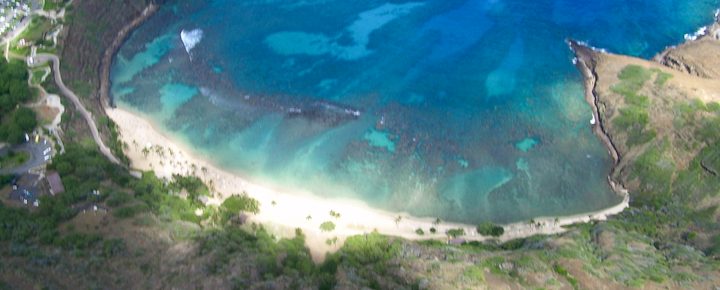

Hanauma Bay’s preservation is of great importance.
That is true for the Hawaii tourism industry as well as for every other reason. At one time, there were up to 4.5 million visitors arriving annually at the preserve. Now, however, Hanauma Bay is only expecting to entertain about half a million in all of 2023.
Preserving Hanauma Bay also requires maintaining lower visitor levels. That number is currently 1,400 people per day. One of the study’s findings was that during the Covid closure, water clarity increased by 56%. Since it has reopened, however, water clarity has decreased.
What rising sea water levels mean for Hawaii.
The state reports that the sea level at Hilo Bay has risen by 10 inches since 1950. It’s now rising faster, at a rate of 1 inch every 4 years. This will lead to increased frequency and reach of coastal flooding. Hawaii also reports that 13 miles of Hawaii beaches are already gone due to coastal erosion, including 10% of Oahu beaches. The state says that 70% of beaches throughout Hawaii are currently threatened by rising sea levels.
The rising sea levels also impact traditional practices including fishpond maintenance, the cultivation of Hawaiian sea salt, and gathering from nearshore fisheries.
On Maui, Kaanapali Beach is fast-disappearing, while Waikiki beaches and the popular Lanikai Beach in Kailua are also particularly vulnerable.
How and When to Visit Hanuama Bay on Oahu.
Make your reservations online two days before your visit; reservations are for specific time slots, starting at 7 am. There is a $25 entry fee for visitors 13 and older; entry for Hawaii residents is free. Parking is $3.00 for visitors and $1.00 for residents, payable on-site.
Wednesday through Sunday you can enter from 6:45 am to 1:30 pm. All visitors must leave by 4:00 pm. Hanauma Bay is closed on Monday and Tuesday.
TheBus no longer drops passengers at Hanauma Bay.
Guest services include a food and snorkel concession, a gift shop, restrooms, and showers.
For more information, call 808-768-6861.
Get Breaking Hawaii Travel News

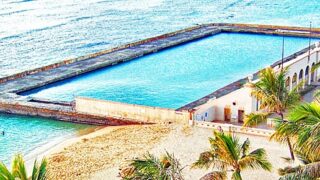
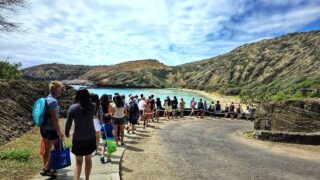
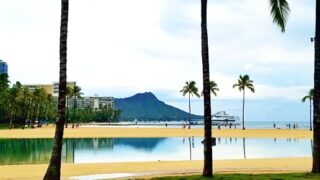


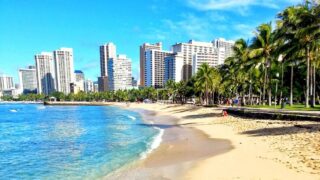
So (just asking), if any part of these dire, sensational and horrifying predictions of doom and gloom are actually based on facts and science, then how stupid was it for Obama to buy a beachfront property on Oahu?
Either Obama doesn’t really think “the sky is falling,” or he isn’t too bright, choosing to acquire property that is essentially (of you believe the climate change extremists) in a flood zone.
I agree, remember when Al Gore said we all would be under water in 10 years, maybe 20 years ago ?! These people thrive on scare tactics. I am over it.
There are two things going on all across Hawai’i – natural erosion and sea level rise due to global warming. Natural erosion is just that – natural and we should just accept it as part of living in Hawai’i. Global warming is man-made and we need to quit burning fossil fuel to stop it. In that regard, travel by tourists to Hawai’i produces huge amounts of CO2, so the best thing for our beaches and the planet is to cut down on jet travel, and cruise ships.
Hey so I would go a little farther and close these places to tourists (but open to locals) for a large chunk of time such as maybe 3 to 6 months out of the year. This lets the area recover from tourist overload. And lets us locals enjoy it and take care of it. Because we don’t need the food kiosk or the snorkel rental stuff. Just working shower towers. How great that would be – to not have to compete with and fight with tourists over these places.
I am sitting in my living room looking out my window,
and as far i can tell the earth is flat.
Yes, this is a worldwide phenomenon, and every coastal area needs to plan for this. At Hanauma, as a non-expert, it appears that for some time the situation can be ameliorated by raising the level of the beach by importing sand, as has been done on other popular beaches, although this is obviously a temporary solution.
Importing sand is a terrible idea. The sand has to come from somewhere, which is typically offshore, which alters the place it was removed from. It is not the natural sand for the beach so it changes the ecosystem of the beach also. And it leaks back into the ocean and pollutes the reefs in the bay. The ecosystem of the bay is more important than tourists having some sand to sit on.
Why doesn’t TheBus go there anymore? How close will it get to it? Many of us do not rent cars during our visits.
Hi Susan.
It is about a ten minute walk from what we see.
Aloha.
Aloha: I would be very careful about following climate change fanatics and their so-called “Science”. The imminent apocalypse from global warming (now renamed “climate change”) has pretty much been predicted every 10 years for the last 50. Its a religion for those who rarely if ever darken the door of a church! We all want to preserver our precious ecosystem, but careful management combined with objective and verifiable data will allow cooler heads (pun intended) to prevail without destroying our economy!
Hi Dan.
Thanks for so many comments. Given that this prediction time frame is so near, we’ll know soon enough what the truth is.
Aloha.
I am not denying rising oceans or climate warming. That being said upfront we should be aware our actions can influence things in our environment.
Back in the 1970’s some scientist said we were headed towards the next Mini Ice Age.
The Earth’s Cooling Climate,” Science News, November 15, 1969.• “Colder Winters Held Dawn of New Ice Age,” Washington Post, January 11, 1970.• “Science: Another Ice Age?” Time Magazine, June 24, 1974.• “The Ice Age Cometh!” Science News, March 1, 1975.• “The Cooling World,” Newsweek, April 28, 1975.• “Scientists Ask Why World Climate is Changing; Major Cooling May Be Ahead,” New York Times, May 21, 1975.• “In the Grip of a New Ice Age?” International Wildlife July-August, 1975.• “A Major Cooling Widely Considered to Be Inevitable,” New York Times, September 14, 1975.• “Variations in the Earth’s Orbit, Pacemaker of the Ice Ages,” Science magazine, December 10, 1976.
Has anyone seen any change in the bay at all? I haven’t scrutinized it but haven’t noticed anything over the years. When I was a kid 50 years ago, we were supposed to have Arizona as a beach state after California dropped in the ocean. Hmmmmm.
Grim? Not at all. Well, maybe for the state collecting $25 a head. But seriously, I would applaud a 3-year moratorium on swimming and snorkeling there. Let the poor over-used, abused bay recover. It is a shadow of what it was back in the 1970s. In 3 years, open it again to maybe 300-500 people a day and charge what boats do for snorkel cruises. The sand, disappearing? Things change. Rivers change course, sand gets washed in and out seasonally. The sand is not the essence of Hanauma Bay; it is the unusual geological configuration and the sea life inhabiting it that has been the fascination. You only get one Hanauma Bay — time to give it some respect and rest.
Give me a break! Many gloom-and-doom predictions have been made over the years. Few come true. It’s all follow-the-money crap.
1970: “Population will inevitably and completely outstrip whatever small increases in food supplies we make. The death rate will increase until at least 100-200 million people per year will be starving to death during the next ten years.”
“The world has been chilling sharply for about twenty years. If present trends continue, the world will be about four degrees colder for the global mean temperature in 1990, but 11 degrees colder in the year 2000. This is about twice what it would take to put us into an ice age.”
1976: “… the news for the future is not all good. The climate is going to get unreliable. It is going to get cold. Harvest failures and regional famines will be more frequent. Weather will probably make history—again.”
1979: “There is a real possibility that some people now in their infancy will live to a time when the ice at the North Pole will have melted, a change that would cause swift and perhaps catastrophic changes in climate.”
1989: “Rising seas could obliterate nations: U.N. officials.” The article detailed a U.N. environmental official warning that entire nations would be eliminated if the world failed to reverse warming by 2000.
2008: ABC released an ominous video about what the world would look like in 2015. As the video warned about rising sea levels, a graphic showed significant portions of New York City engulfed by water. Al Gore himself famously predicted in the early 2000s that Arctic ice could be gone within seven years. At the end of seven years, Arctic ice had undergone a period of expansion, though recently it has been melting at a quicker pace.
Just use the terms unfullfiled climate predictions in your favorite search engine
Totally agree with your comments as I worked on Model Simulations for many years.
So think about it. Maybe the world and how we ignore how to appreciate it is at the route of these things. Tourists yes to a degree but industry and corporations that care little about the damage they do to our planet. Maybe that is where you might go on sorting this out. Cruise ships in
Port might be a place to start .
So is this good news or bad news? You mention how wonderful Hanauma Bay was during the covid shutdown and how humans visiting again is ruining it…seems like if visitors can’t visit, Hawaiians will get what they wanted. Besides, most of the climate models seem to be wrong…otherwise the human race would have been wiped out 10 years ago.
The operative word is “predictions” and when you are given grants to study this stuff then you will indeed find a causal relationship no matter what the truth is! Publish or perish is indeed the manta of scientific research in America and always has been! Earlier this year the cry went out about the disappearance of the beaches of Ka’anapali and yet they are still there! Beaches come and beaches go all of the time. I watch the beach cam at the Maui Eldorado all of the time because that’s where I stay while on Maui. Over this past year a lot of the beach appeared to be gone and yet at times they had to install the sand barriers on the grates of the fences of the beach cabana because of how high the beach sand had become! It is way past time for all of the nonsense of blaming literally everything that is going on around the world on “global warming” because it is not.
Hi Don.
Thanks for so many comments over the years! As far as Kaanapali Beach, it is definitely disappearing. It’s a place that we’ve visited for years and the huge changes are undeniable.
Aloha.